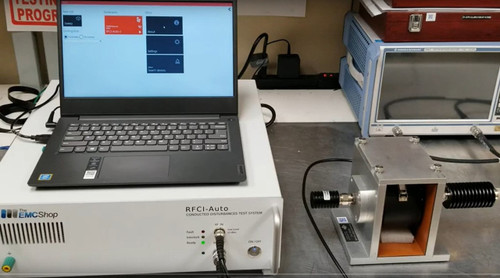Rent a test system to inject the electromagnetic disturbances and radiated energy specified in ISO 11452-4. Please note this is for BCI injection method only, covering 100 kHz to 400 MHz. For higher frequency, tubular wave coupling test method, contact us.
Utilizing the available inventory, most orders requiring immediate shipment will include an RF conducted immunity test system that encompasses the RF generator, power amplifier, software and measurement tools all in one box. Accessory kits to calibrate the system first, and execute the test are included as well.
Base packages include items 8, 9 and 10 in the diagram and is sufficient for many rental customers.
Customers will also order the test bench, ground plane, low relative permittivity support, and shield room to best isolate the test from nearby electronics within their plant as well as closer replicate the tests performed by a certifying test lab.
The next most requested setup add the set of artifical networks and power supply. In the event a customer does not have a load simulator to adequately exercise their product to its full potential, contact us to accomodate.














